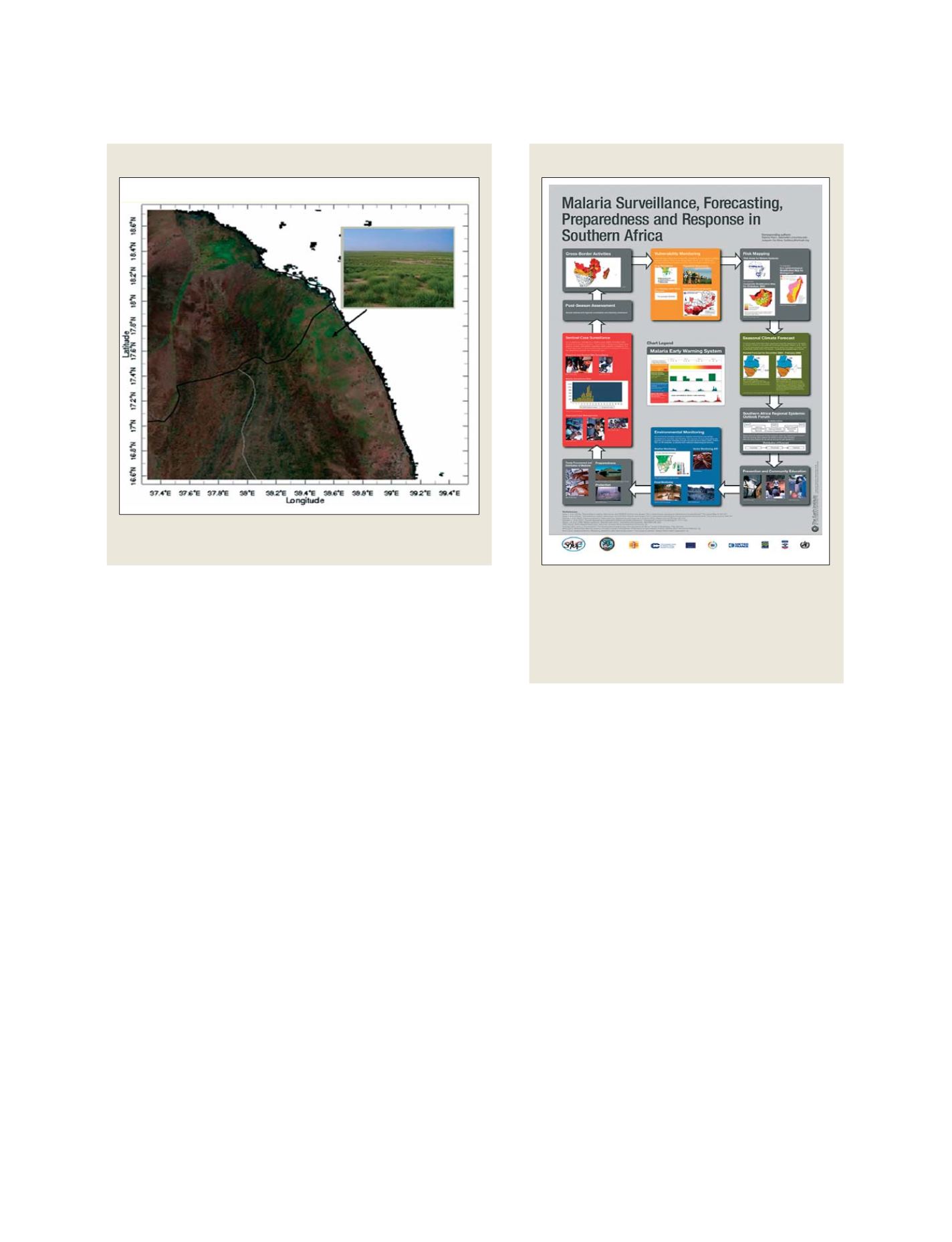

The third MEWS process is monitoring the weather as it occurs.
Are temperatures unusual for this time of year? Is the rainfall higher
than would normally be expected? The latter is now freely moni-
tored through satellites as shown in the section above.
The fourth monitoring process is epidemiological surveillance.
While the detection of an epidemic through a rapid increase in the
number of cases would be the most reliable, it is unfortunate that
routine case reporting systems are at present, especially in sub-
Saharan African countries, unable to detect epidemics in sufficient
time to enable an effective response.
Integration of early warning systems
into decision-making processes
Early warning systems do not prevent diseases if the infrastructure,
contingency plans and financial resources are not available. The case of
the Desert Locust crisis in 2004-2005 is a good example. Despite regular
warnings and several appeals issued by FAO, meetings organized with
donors, and exact knowledge of the progression of Desert Locusts
towards breeding areas in the Sahel where countries had fewer finan-
cial resources to implement control measures, the donor community
was slow to respond. Locusts captured the public attention during the
crisis in June-July 2004 and funds started flowing after numerous
swarms had already invaded agricultural zones in Mauritania, Senegal,
Mali and Niger, reducing the crop production and putting millions of
people at risk of food shortage.
In order to overcome this problem, different solutions must be inves-
tigated to optimise reactions to potential disaster. In the case of Malaria,
an integrated framework of actions has been developed to translate the
results of the early warning system into early action. A poster was devel-
oped in collaboration with several agencies and programmes that
summarizes a series of actions (i.e. managing the distribution of bed-
nets, distribution of anti-Malaria drugs, mosquito control)
to be taken when early warning systems indicate a possi-
ble outbreak of Malaria.
The current momentum and investment in strength-
ening health systems and reducing disease in sub-Saharan
Africa allows this framework to become operational. The
launch of initiatives to reduce Malaria such as Roll Back
Malaria, Millennium Development Goals and the Global
Fund to Fight AIDS, Tuberculosis and Malaria provide a
platform to help the transfer of these new technologies
toward the most affected countries. Data and good inten-
tions alone, however, are not sufficient. Assistance is also
required in the process of technology transfer and in
structuring national decision-making processes. An
important requirement is the training of Ministries of
Health on how to use the new technologies issued for
remote sensing. People working in Ministries of Health
are not expert in remote sensing and do not have time to
become so. It is therefore important to provide easy-to-
understand and easy-to-access information. This is often
a problem overlooked within the remote sensing commu-
nity and requires an interdisciplinary approach in order
to provide the right level of information to the right deci-
sion-makers.
[
] 187
MODIS image along the Red Sea Coast
A MODIS image taken in February 2007, showing in green the vegetation
along the Red Sea Coast
Malaria response
A Malaria poster developed through collaborations between
many agencies and programmes (SAMC, SADC DMC,
DEMETER, The European Centre for Medium Range Weather
Forecast, ENSEMBLES, IRI, Meteo France, UK Met Office,
USAID and WHO). The poster is distributed to the epidemic-
prone districts in Southern Africa to illustrate the decision
support process
Source: IRI Data Library Map Room
Source: Da Silva and Marx in Da Silva et al., 2004, Malaria Journal
S
OCIETAL
B
ENEFIT
A
REAS
– H
EALTH
















